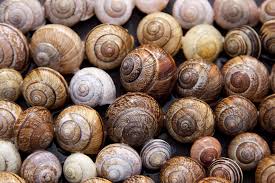Se-tenant: Shells (Suriname 2022)
Shells (Suriname 2022)
02 February (Suriname ) within release Shells (2022) goes into circulation Se-tenant Shells face value 238 Surinamese dollar
| Se-tenant Shells in catalogues | |
|---|---|
| Colnect codes: | Col: SR 2022-02 |
Se-tenant is square format.
Issued in panes containing two horizontal se-tenant strips of 10, printed tete-beche. Face value of C SR$66.50 on day of issueAlso in the issue Shells (2022):
- Stamp - Angaria poppei face value C;
- Stamp - Brechites penis face value 9.50;
- Stamp - Brechites penis face value 17;
- Stamp - Campanile symbolicum face value 18;
- Stamp - Cantharus undosus face value 19;
- Stamp - Engina alveolate face value 20;
- Stamp - Glossus humanus face value 21;
- Stamp - Nassaria fusiformis face value 22;
- Stamp - Protrochus midas face value 23;
- Se-tenant - Shells face value 238;
- Stamp - Strobus canarium face value 24;
Se-tenant Shells it reflects the thematic directions:
A seashell or sea shell, also known simply as a shell, is a hard, protective outer layer created by an animal that lives in the sea. The shell is part of the body of the animal. Empty seashells are often found washed up on beaches by beachcombers. The shells are empty because the animal has died and the soft parts have been eaten by another animal or have rotted out. The term seashell usually refers to the exoskeleton of an invertebrate (an animal without a backbone). Most shells that are found on beaches are the shells of marine mollusks, partly because many of these shells endure better than other seashells.
The Kionga Triangle (German: Kionga-Dreieck, Portuguese: Triângulo de Quionga) was a small region of German East Africa situated at the mouth of the Ruvuma River. The Ruvuma served as the border between the German colony and Portuguese Mozambique, and the Kionga Triangle was the only section of German East Africa south of the river. Its principal settlement was Kionga (now Quionga ) which had a population of 4,000 in 1910. It became a German possession in 1894 but came under Portuguese control in April 1916 during World War I. The post-war Treaty of Versailles reaffirmed that the river was the border between Tanganyika, then under British control, and Portuguese Mozambique. The triangle was the only territory that the treaty awarded to Portugal.

